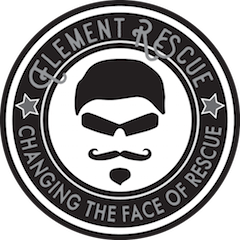We live in an ever-changing world and it is certainly becoming more complex. On the home front, the threats we face on the street range from the scumbag looking to take your wallet or the next active shooter, to the terror cell preparing to make the news. As emergency responders, we must evolve.
How do you evolve, you ask? First and foremost ask questions. Better yet, question everything! Make your trainer TRAIN you! There is a significant difference in training a student to understand why they are executing a specific technique versus simply showing them how to do it. Element Rescue believes in being able to put our money where our mouth is, by relying on technical information, data-driven rigging, reproducible research and relevant science to support the effectiveness of our techniques. This moves our views from the subjective to the objective.
Second, you have to know the rules to break the rules...so know the rules! Remember when you get that rescue certification in hand and place it in you personnel file, it only means that you have reached the absolute bare minimum competency level to execute those skills. The rules are needed in those classes ... so you don’t kill yourself or someone else. After that new rescue certification, you are firmly sitting on the left side of the bell curve and need the training wheels (hard rules). After a bunch of pushing the limits, learning the physics of your trade, appreciating how material science can make your life easier or more dangerous, and failing every possible way in that small segment of rescue...you begin to move to the right side of the curve. After moving to the back side of the bell curve and realizing most of your time is actually in the “outlier” realm, you will find yourself much less dependent on the rules - because you have a deeper understanding of the nuances of your craft, which goes way beyond what rules can accomplish. Real world rescue responses live between the rules, what you will eventually realize is that those rules that once kept you safe... are now handcuffing your response capabilities. This is due to the fact that you can only control a small amount of your response...constants, like environmental pathology and casualty pathology innately produce exponential variables - to which there could never be enough "rules" to cover all the potential response scenarios.
I once heard a student say, “Technical rescue is relatively easy.” Really? Yes, it may be easy when you play the dope on a rope off the local fire tower. Anchors? There are anchors everywhere. Add complexity by changing the environment and see how easy it is. Remove the highly trained (hopefully) instructor keeping you safe and see how easy it is. Take away half of your equipment and see how easy it is. Get the point? You are probably learning in a sterile environment. At Element Rescue, every attempt is made to implement real word training through the use of creative props, realistic operational constraints, or even road trips as needed, to drive home that rescue is a thinking mans game. Ask many of the end-users we work with about anchors, or lack of anchor availability, and they will tell you… it’s not that big off deal, they can always be the anchor if needed (meat anchor). A little application of physics (forces and friction) and you will most likely be able to clip in to yourself as the anchor and manage most human load rescue situations.
Third, get to know your equipment and the equipment of the world. NFPA is a great thing and many of our programs follow the professional qualifications standards, however, if you are hung up on NFPA 1983, you are missing out on a whole other world of rope rescue. Do you think mountain rescue teams are tooling around with steel carabiners and 2” pulleys? For the law enforcement and military folks out there, would you want to be maneuvering around with steel carabiners and ½” rope? What about UIAA / EN Standards? Why do we disregard the weight these groups carry on certifying equipment? Do we think that folks climbing multi pitch rock faces, or ice climbing in Himalayan expeditions have sub-par equipment standards? Common sense applies! Know your equipment; know your craft. A rescuer should be trained at a high enough level to make the determination for his/her self.
Finally, never stop learning. We learn something every time we teach a class. There is no “One” way to do a rescue, or even a “Best” way to perform a rescue. There is just simply the best way that you could accomplish the task based on your organic resources, time, and threat level. We have done full auto extrication courses with just a hi-lift jack, and lifted collapsed exterior walls with just parts of the collapsed structure (lever and fulcrums). In many cases, these techniques are just as fast, or faster, then using traditional equipment. Many believe that using the latest $500 progressive capture device or auto locking bail-out system makes you a Jedi rescue master. In reality, what will make you a “Rescue Yoda”, is knowing and applying material science and physics so that you can use minimal gear or even completely improvised items to conduct a successful rescue.
Don’t stop at just being able to make “the magic” happen just within the realm of rescue. If you are having to improv your hasty rescue, you will most likely have to improv your medical care too. Out of all the medical guidelines out there, only TECC (Tactical Emergency Casualty Care), emphasizes the requirement for improvisational capabilities. Whether you are responding to an active shooter, find yourself as a spectator in the midst of an IED incident at a marathon, or at the movies with your family when some sociopath kid opens fire, you better be prepared to make “the magic” happen with what you have. You will never have enough kit, or the right kit. Murphy will always show up and make his presence known. Keep your head, accept the circumstances as suboptimal, and save some lives.
It’s an evolution; where we once conducted rescues within a one or two-dimensional space, today’s complexity requires more depth to our game. We guarantee the next bad guy seeking to wreak havoc in your community knows much more about you and how you will respond, than you do of him...HE’S EVOLVING TOO.
There is a rescue revolution happening right now and Element Rescue is on the front lines; Evolve or Die.

